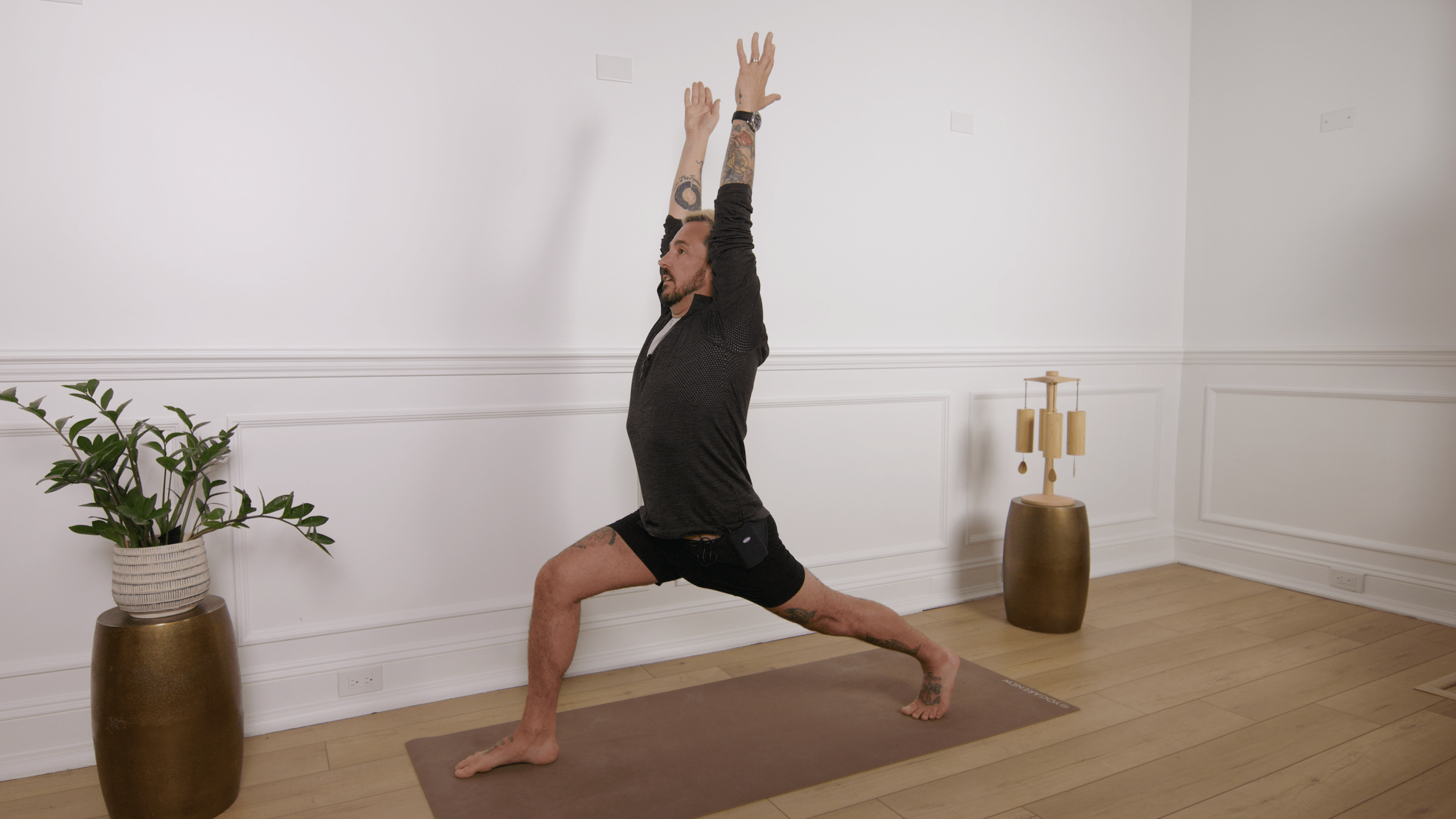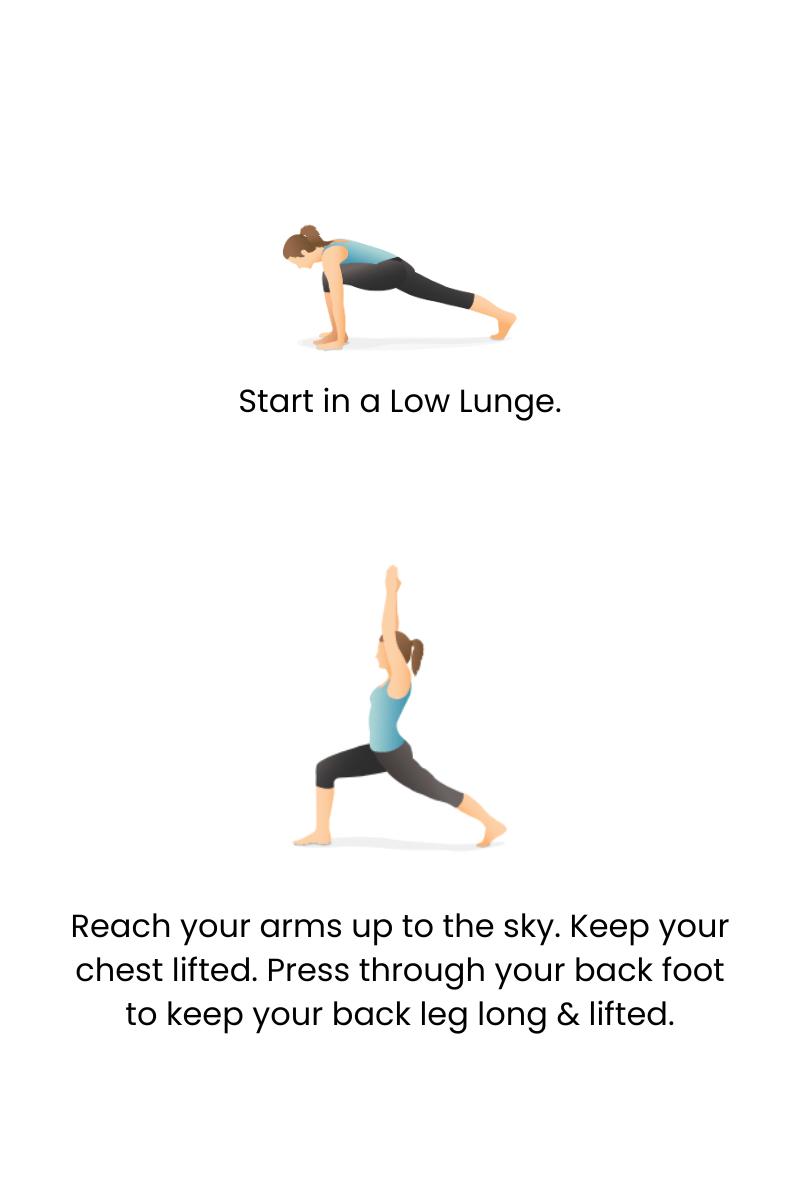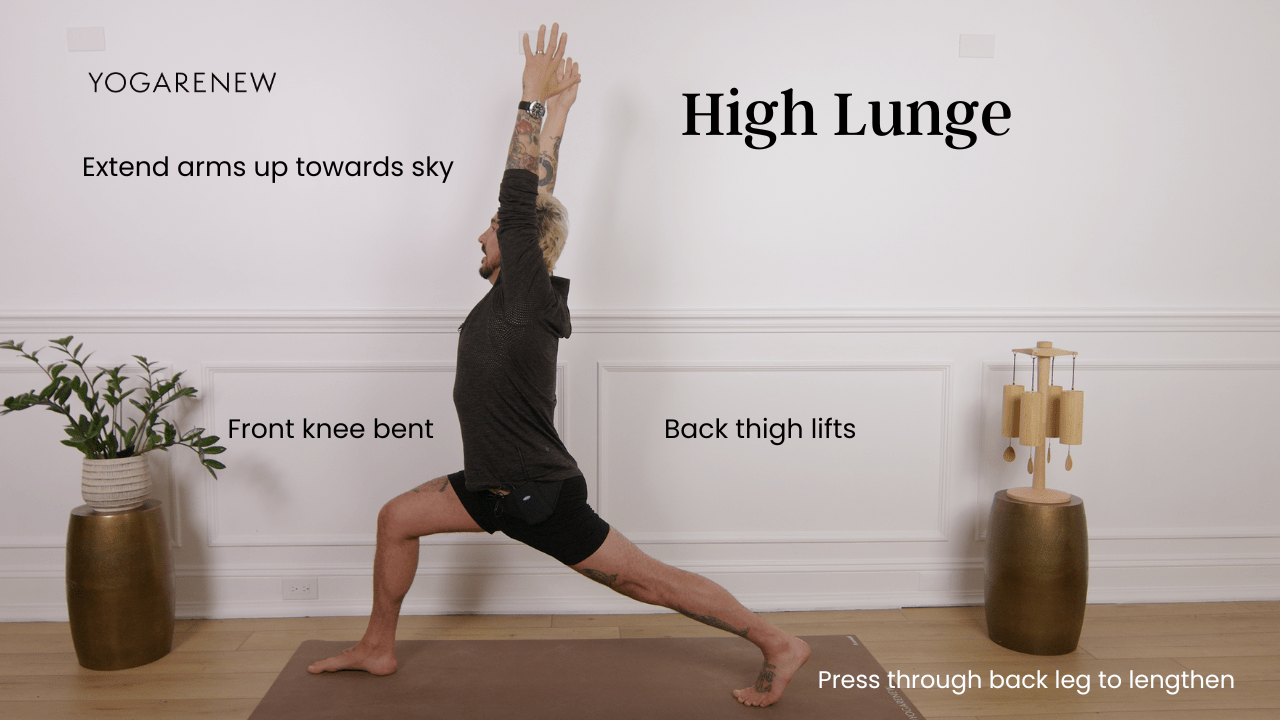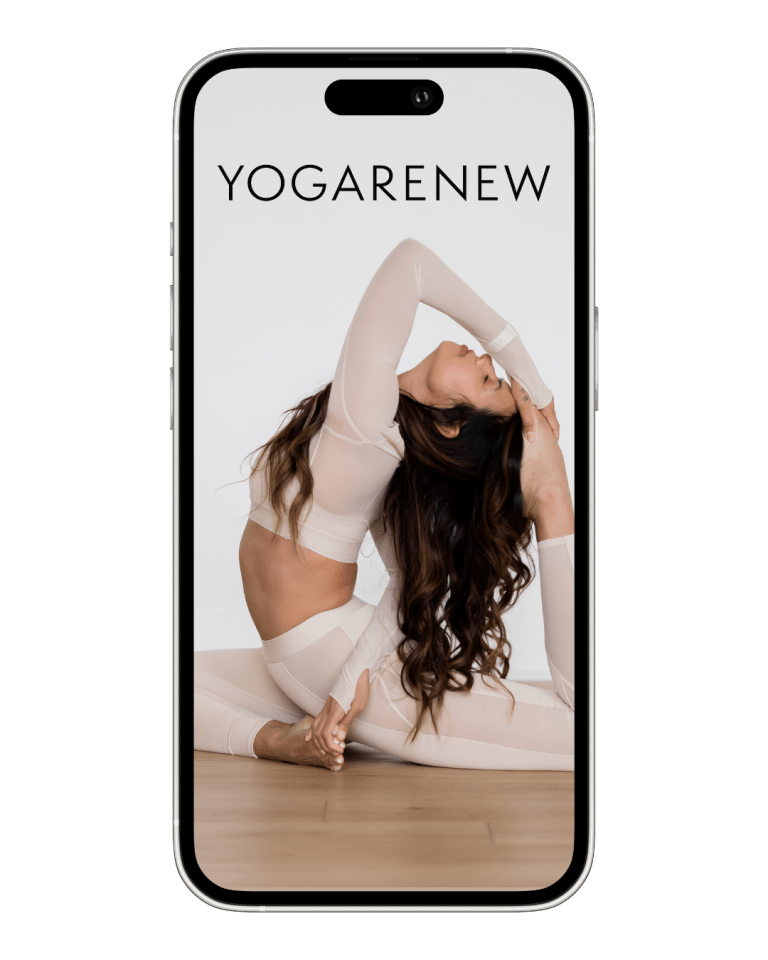What is High Lunge?
English Name: High Lunge
Sanskrit Name: Alanasana (pronounced AH-lah-NAH-suh-nuh)
Category: Standing, Strength, Hip Opener, Foundational

English Name: High Lunge
Sanskrit Name: Alanasana (pronounced AH-lah-NAH-suh-nuh)
Category: Standing, Strength, Hip Opener, Foundational
Alanasana, or High Lunge, is a foundational standing posture that builds lower-body strength, improves balance, and opens the front of the hips. Common in Vinyasa, Hatha, and Power Yoga classes, this pose transitions fluidly between strength and stability while offering deep breath awareness and focus.
Whether used as a transitional shape or a powerful hold, High Lunge energizes the body, strengthens the legs, and sets the foundation for more complex standing postures and backbends.
Strengthens the Legs and Core: Builds endurance in thighs, calves, and abdominals
Opens the Hip Flexors: Stretches the front of the back leg, counteracting sitting
Improves Balance and Focus: Challenges coordination and mental presence
Prepares for Backbends: Opens the front body and builds spinal awareness
Energizes the Whole Body: A grounding and uplifting posture that boosts circulation
Begin in Downward-Facing Dog or from Tadasana (Mountain Pose).
Step your right foot forward between your hands, stacking the knee above the ankle.
Keep the back leg long and strong, pressing through the ball of the foot with the heel lifted.
Inhale and sweep your arms overhead, palms facing each other or together.
Square the hips forward and draw the tailbone down to engage the core.
Keep your front thigh parallel to the mat and maintain length through the spine.
Breathe deeply, holding for 5–10 breaths, then switch sides.


Front knee over ankle: Avoid letting it drift past the toes
Back leg active: Press firmly through the back heel to energize the pose
Square the hips: Draw the right hip back and left hip forward (or vice versa)
Spine long and chest lifted: Avoid collapsing into the lower back
Arms strong but shoulders relaxed: Create lift without tension
“Drive your back heel toward the floor for stability.”
“Lift your chest while drawing the tailbone down.”
“Scissor your inner thighs toward one another for balance.”
“Root down through the feet to rise up through the fingertips.”
“Keep your breath steady—let it support your strength.”
Knee or Ankle Injuries: Modify with knee down or use support
Balance Challenges: Practice near a wall or with hands on blocks
Low Back Pain: Engage core and avoid overarching the lumbar spine
Recent Hip Surgery or Strain: Use caution and seek professional guidance
High Blood Pressure: Keep arms lower or hands on hips to reduce elevation
Knee Down: Practice Low Lunge (Anjaneyasana) for less intensity
Hands on Hips or Blocks: Reduces shoulder strain and improves balance
Shorten the Stance: For more stability if hamstrings or balance are limited
Wall Support: Use a wall behind you for support and feedback
Twisted High Lunge: Add a prayer twist over the front leg
Crescent Lunge: Similar shape with more upright posture and slight backbend
Bound Lunge: Add a bind under the front thigh to deepen the pose
Lunge to Warrior III Transition: Flow into a balancing posture from the lunge
Front knee collapsing inward: Track the knee over the middle toe
Hips turning open: Square them forward to maintain alignment
Back leg too soft: Keep it strong and lifted for activation
Overarching the lower back: Engage the belly and tuck the pelvis slightly
Holding the breath: Stay connected to smooth, steady breathing
Acute Knee or Ankle Injury: Practice Low Lunge or Supine Stretch alternatives
Unstable Balance: Use a chair or wall for support
Tight Hip Flexors: Shorten your stance or keep the back knee down
Pregnancy (Later Trimesters): Use wider stance or modify with blocks
Fatigue or Dizziness: Step back from longer holds and focus on breath
High Lunge is a dynamic, energizing pose that invites stability, strength, and awareness. It strengthens the lower body, opens the front body, and sharpens mental focus—making it both empowering and accessible. Whether held statically or woven into a Vinyasa flow, High Lunge offers a deep connection to the ground beneath you and the energy rising through you.
Use blocks under your hands or practice near a wall for added support.
It’s both! It opens the hip flexors of the back leg while strengthening the front thigh and core.
Start with 5 breaths and gradually build endurance as strength improves.

Explore classes & pose tutorials for any style, format, duration or experience level with a free account in the YogaRenew app. Or subscribe and gain access to workshops, live classes and more.